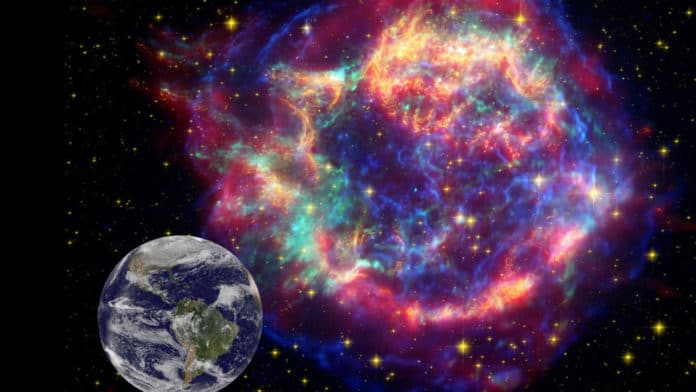Nearby supernova explosions shape the interstellar medium. Ejecta, containing fresh nucleosynthetic products, may traverse the solar system as a transient passage, or alternatively, the solar system may navigate local clouds that may represent isolated remnants of supernova explosions.
Such scenarios may modulate the galactic cosmic-ray flux intensity to which Earth is exposed.
The supernovae remnants found in deep-sea sediments unfolding the mystery surrounding the space of the solar system.
A new study by the Australian National University has shown that Earth has been traveling for the last 33,000 years through a cloud of faintly radioactive dust. Continuously, for the last 33,000 years, space has been seeding Earth with a rare isotope of iron forged in supernovae.
Scientists searched through several deep-sea sediments from two different locations that date back 33,000 years. Using the extreme sensitivity of HIAF’s mass spectrometer, they discovered clear traces of the isotope iron-60.
Isotope iron-60 is believed to be formed when stars die in supernova explosions. It is radioactive and completely decays away within 15 million years. Meanwhile, any iron-60 found on the Earth must have been formed much later than the rest of the 4.6-billion-year old Earth and arrived here from nearby supernovae before settling on the ocean floor.
It’s not the first time that the isotope, known as iron-60, has dusted our planet. Professor Anton Wallner, a nuclear physicist at ANU, previously found traces of iron-60 at about 2.6 million years ago, and possibly another at around 6 million years ago. It means, it does contribute to a growing body of evidence that such dusting is ongoing- Earth is still moving through an interstellar cloud of dust that could have originated from supernova millions of years ago.
The solar system is traveling through a denser cloud of gas and dust, called the local interstellar cloud (LIC). If this cloud had originated during the past few million years from a supernova, it would contain iron-60. That’s the reason scientists decided to search for more recent sediment.
They found iron-60 in the sediment at extremely low levels—equating to radioactivity levels in space far below the Earth’s natural background levels—and the distribution of the iron-60 matched Earth’s recent travel through the local interstellar cloud. But the iron-60 extended further back and was spread throughout the entire 33,000 year measurement period.
Professor Wallner said, “Recent papers are suggesting that iron-60 trapped in dust particles might bounce around in the interstellar medium. So the iron-60 could originate from even older supernovae explosions, and what we measure is some echo. More data is required to resolve these details.”
Scientists from ANU, the Australian Nuclear Science and Technology Organization, HZDR, the University of Vienna, and the TU Berlin were involved in the study.
Professor Wallner researched the ANU Heavy Ion Accelerator Facility (HIAF). He also holds joint positions at the Helmholtz-Zentrum Dresden-Rossendorf (HZDR) and Technical University Dresden (TUD) in Germany.
Journal Reference:
- A. Wallner et al. 60Fe deposition during the Late Pleistocene and the Holocene echoes past supernova activity, Proceedings of the National Academy of Sciences (2020). DOI: 10.1073/pnas.1916769117
